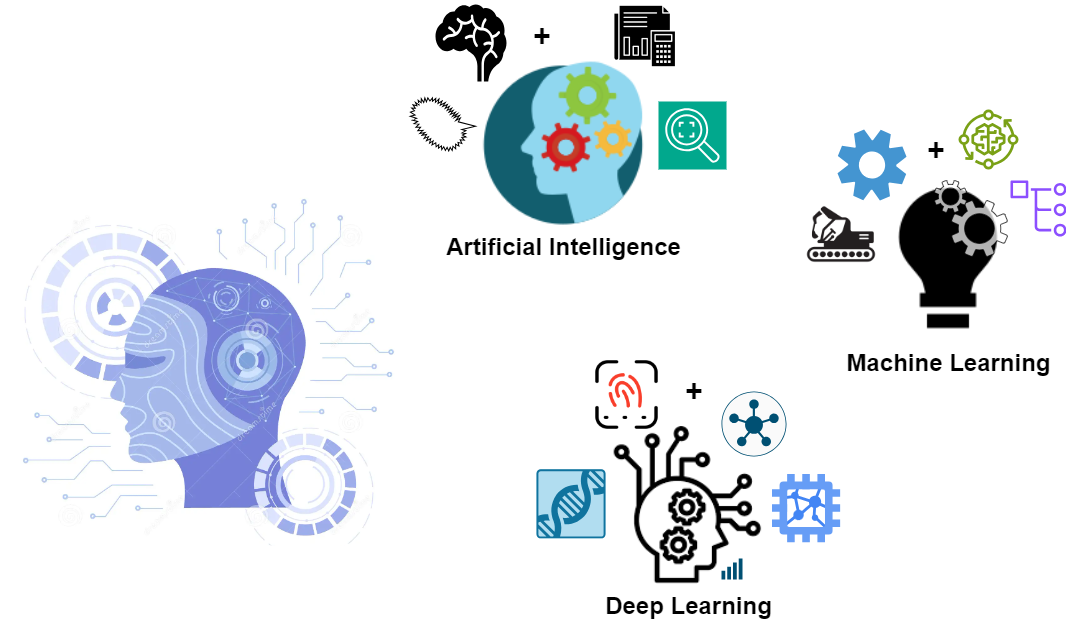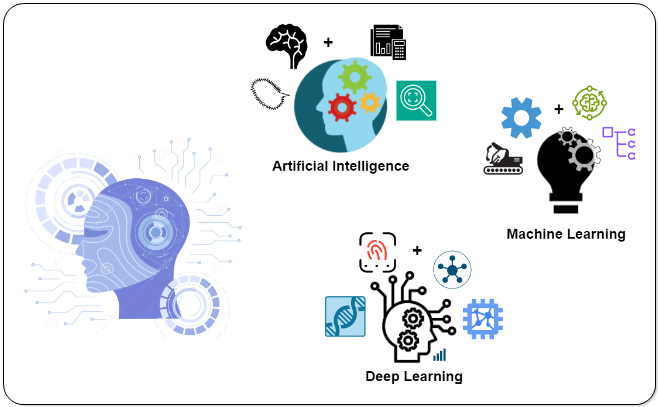MACHINE LEARNING IN ROBOTICS
Robots’ autonomy in work efficiency is an intriguing facet of technological progress. The combination of machine learning (ML) and robots has created new opportunities. ML algorithms enable robots to learn, adapt to shift the preferences, and make precise choices. The article delves into the uses, their relationship with deep learning, areas, advantages, problems, and exciting future prospects of ML in robots.

A machine learning robot is an instance of a robot that uses machine learning methods to gain information and enhance its ability to adapt as it trains. These robots are meant to acquire information from their surroundings using a wide range of sensors, evaluate that data, and modify their actions accordingly, substantially raising their autonomy.
Machine learning enables robots to detect patterns that help them comprehend their surroundings and execute certain jobs more effectively through implementing what they understand. Robots may learn independently using machine learning algorithms, eliminating the need for task-specific programming. This enables robots to complete complex tasks, navigate unpredictable surroundings, and work effectively with individuals.
How Deep Learning is related to Robotics?
Deep learning is a machine learning paradigm that teaches computers to behave like humans, mostly in robotics. It processes data using artificial neural networks, allowing deep learning robots to analyze complicated data, make intelligent judgements, and execute tasks such as object detection, speech interpretation, and human language comprehension. The objective is to improve robot efficiency and reduce the need for human direction, allowing them to do functions such as speech recognition and object identification.
Robotic Computation Areas Preview
Robotic processing is divided into four areas: vision, grabbing, mobility control, and data-driven learning. These four connected sectors rely on machine learning and artificial intelligence to function.
- Vision:
- Uses machine learning to recognize items.
- Analyses photos and videos to detect activity and predict decisions.
- Grabbing:
- Machine learning enables precise object manipulation.
- Evaluates form, size, and texture to select the optimal gripping techniques.
- Mobility Control:
- Ensures robots operate smoothly and effectively.
- Analyses sensor data to forecast the impact of operations.
- Data-driven Learning:
- It enables robots to gain knowledge from data despite explicit programming.
- Analyses huge datasets to find patterns and make predictions.
Applications of Machine Learning in Robotics
- ML-enabled robots are transforming the industrial business by optimizing manufacturing procedures, completing routine tasks with precision, and reacting to line changes. These robots identify irregularities, anticipate servicing needs, and increase production.
- Healthcare robots are revolutionizing the market by utilizing machine learning algorithms to help with operations, rehabilitation, and personalized care. The aforementioned robots may examine medical pictures, monitor patient vital signs, and increase diagnosis accuracy, therefore optimizing treatment activities.
- Self-driving vehicles or autonomous drones rely on algorithms that use machine learning to evaluate information from sensors, evaluate road hazards, and make real-time navigational decisions to improve road safety by learning from human driving habits.
- ML is transforming machines for service, letting them handle activities such as housework, elderly care, and assistance with customers. These machines can interpret natural language, recognise things, and adjust to individual consumer habits, empowering them to tailor encounters and give intelligent help.
- Machine learning algorithms can detect abnormalities, anticipate breakdowns of equipment, and plan preventative care for industrial robots and machinery, reducing downtime and increasing production.
- They additionally allow robots to learn new jobs and alter their behavior with respect to input, which allows for continual development and adaptability in dynamic situations such as domestic chores or industrial automation.
Advantages
Machine learning (ML) is a strong technology in robotics that improves robot capabilities and efficiency. It enables robotics to adapt to various settings, learn from their experiences, identify patterns, and implement modifications to improve effectiveness. Machine learning (ML) methods also allow robots to learn optimal task execution techniques, maximizing energy efficiency and avoiding waste. It also improves robot security by identifying impediments, forecasting dangers, and making real-time decisions to keep both humans and robots safe. Additionally, ML algorithms allow robots to do tasks with great precision and accuracy, hence increasing their motor abilities and performing sensitive procedures.
Challenges
The use of machine learning (ML) into robots has various advantages, including improved efficiency and performances. However, there are certain obstacles, such as data limits, generalization, real-time decision-making, and ethical concerns. ML techniques require vast volumes of reliable information, which can be difficult to collect and categorize. They may struggle to generalize in novel contexts, whereas robots must learn from broad information and adjust to different settings. Real-time decision-making is critical in dynamic contexts, and machine learning algorithms should be efficient and fast to ensure safe and successful robot behavior. As robots grow more autonomous and relate to people, ethical concerns emerge, and ML models must assure equality, transparency, and responsibility throughout decision-making procedures.
The future of ML in robotics is full of potential, as robots progress and become smarter beings capable of learning from limited information and adjusting to new situations.
Conclusion
Machine Learning (ML) is transforming robotics by allowing robots to learn, change while carrying out complicated tasks with accuracy. It has uses in a variety of areas, including manufacturing, medical care, and self-driving vehicles. Despite the hurdles, ongoing research and development could result in a future in which intelligent robots collaborate with people, thus enhancing productivity, security, and standard.
